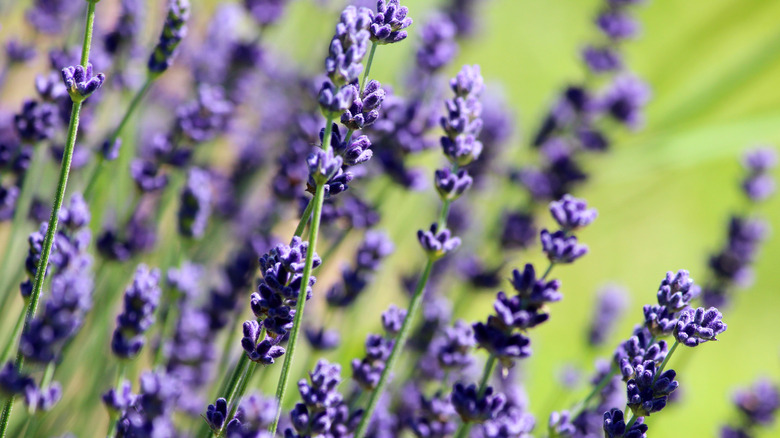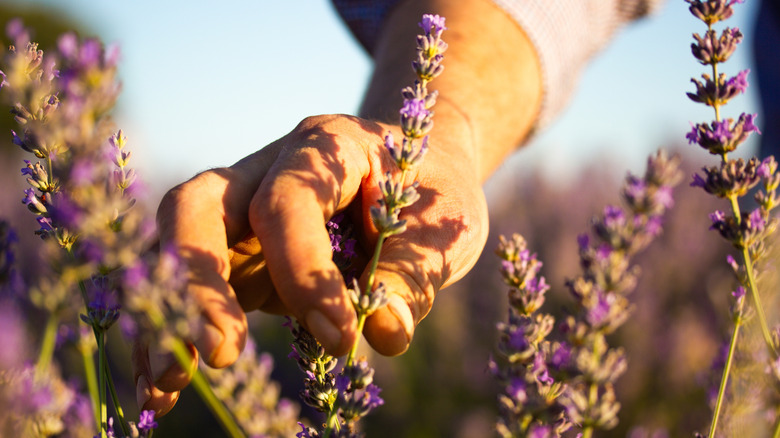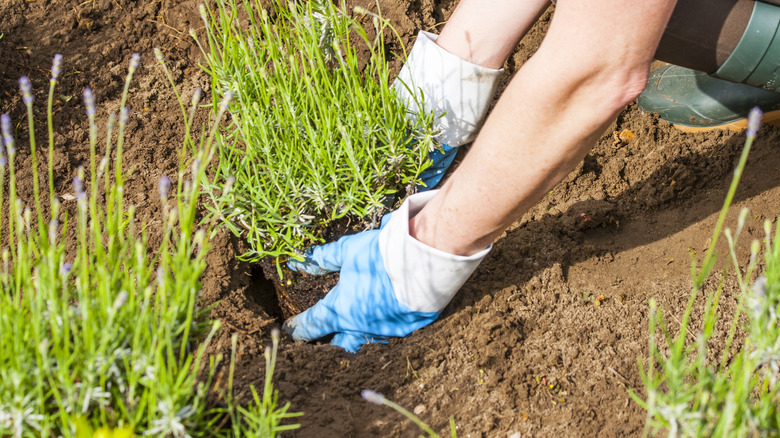This Easy Propagation Technique Is A Free Way To Help Lavender Thrive
We may receive a commission on purchases made from links.
Fragrant, beautiful, useful in cooking and crafts, generally unappealing to deer and rabbits, drought resistant ... as far as plants hardy in USDA Hardiness Zones 5 through 9 go, lavender is pretty much the total package. English lavender (Lavandula angustifolia) in particular is the most commonly grown species, although there are over 45 species and 450 lavender plant varieties. (Fun fact: English lavender isn't actually from England but the Mediterranean region; it just picked up that name due to how well it grows in the English climate!)
Luckily for gardeners who can't get enough of this aromatic shrub, there are several ways to plant lavender in your pots and yard. Seeding might be your first thought –- it is possible to grow lavender from seeds, but not recommended, as this species has a low germination rate and you might end up with little to show for your efforts. You'll probably have more success with stem cuttings from an established lavender plant, which can be grown in a container and later transplanted once they've established roots.
There is another option that you might not have heard of: layering. Essentially, this means forcing existing stems to grow roots, forming a new plant while still attached to the parent. Although there are a few different layering techniques — you may have heard of tip, mound, or air layering — the simple layering technique is a solid place to start.
Benefits of layering lavender
One upside to layering is that any new plants created via this technique will be exact copies of the original plant, so you can be sure that what you're growing is entirely one kind of plant and not a hybrid created via cross-pollination — however, this also applies to cuttings. Apart from the obvious (there won't be any containers full of little plants-in-progress cluttering up your home or shed) there are a few ticks in the "pros" column for layering as opposed to using cuttings.
Unlike plants grown from cuttings, which have to develop their own root systems, a child plant grown with the layering method still receives nutrients and moisture from its parent plant until it's detached. By reducing water stress and maximizing carbohydrate levels, this technique may be more successful than growing from cuttings. It's a fairly simple process, and as long as you're already familiar with the basic care instructions for lavender plants, you can just "rinse and repeat" for as much lavender as you want!
How to propagate lavender by layering
Late winter or early spring is generally a good time to start the process, though with lavender, you might find success starting at any time of year. Step one is to look at your prospective parent plant and identify healthy low-lying stems that can bend without breaking. Once you have selected the best stem or stems, remove all leaves from the part that will be buried. You'll also want to scrape the bark away or otherwise "wound" the stem, which can help stimulate root production. Leave the top 6 to 12 inches of the branch alone, as this will become the top of your new plant.
Next, bend the prepared stem to the ground and add a rooting hormone, following any package instructions (you can easily find products like Garden Safe's TakeRoot rooting hormone or Bonide Bontone II rooting powder online). Bury the denuded portion of the branch under 3 to 4 inches of soil, leaving the top exposed. If it won't stay in place, you may want to use a gardening staple or something similar.
If successful, in eight weeks or so you should start to see new root growth. The child plant should be left attached to the mother plant until next year, at which point it can be cut away and planted wherever you like.


